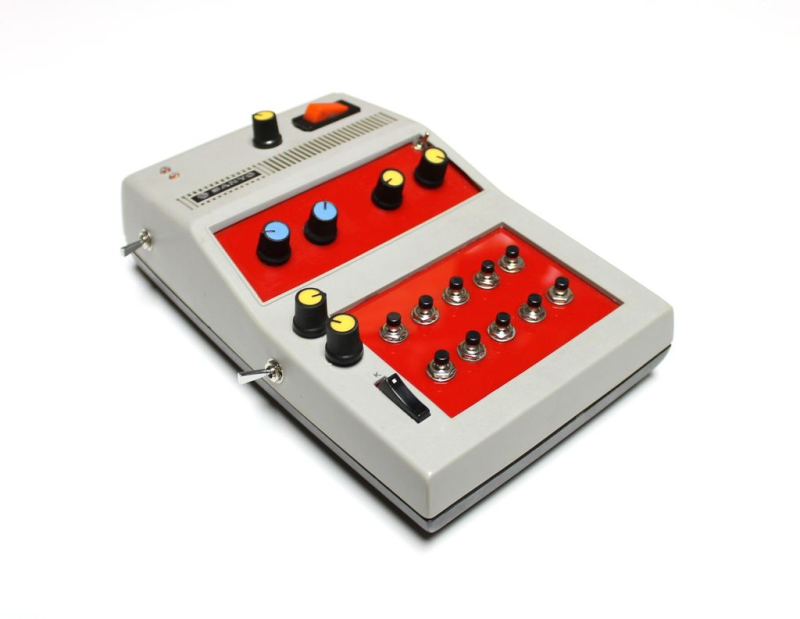A while back, [lonesoulsurfer] stumbled upon a mind-blowing little DIY synth on YouTube and had to make one of his own. We don’t blame him one bit for that, ’cause we’ve been down that cavernous rabbit hole ourselves. You might want to build one too, after you hear the deliciously fat and guttural sounds waiting inside those chips and passives. Don’t say we didn’t warn you.
The main synth is built on five LM358 op-amps that route PWM through a pair of light-dependent resistors installed near the top. There are two more oscillators courtesy of a 40106 hex inverting Schmitt trigger, which leaves four more oscillators to play with should you take the plunge and build your own.
He didn’t just copy the guy’s schematic and call it good. He added [a 555-based arpeggiator that’s controlled with two homebrew optocouplers. These sound fancy and expensive, but can be bred easily at home by sealing an LED and an LDR inside a piece of black heat shrink tubing and applying a bit of PWM. With the flick of a toggle, he can bypass the momentary buttons and use the yellow knob at the top to sweep through the pitch range with a single input.
Although he doesn’t hold your hand through the build, [lonesoulsurfer] has plenty of nice, clear pictures of the process that nearly give a step-by-step guide. That plus the video demo and walk-through should get you well on your way to DIY synthville.
If this all seems very cool, but you’d really like to understand what’s happening as you descend into the rabbit hole, our own [Elliot Williams]’s Logic Noise series is an excellent start.
















This thing looks great, and sounds even better
That is impressive
Nice one, !
When I was a teenager I made a somehow similar circuit (except for the arpeggiator part) which I thought delivered nice exciting tones.
Unfortunately my mother did not agree at all about the exciting tones so after a short time I was ordered to built circuits with leds in place of loudspeaker.
Haha! Been there, done that.
That’s the good thing about being a “grownup”. You can make all the exciting tones you want!
That sounds awesome. And I really don’t need another project for the bench :).
He speaks a little straine, Kiwi perhaps. Things must turn backwards doununda, pitch increases when knobs are turned CCW and lowest pitch keys on the right. OK.
Very cool and impressive. Me like.
For the first few seconds I thought you were playing the C64 Driller theme.
This thing sounds really good, and it’s mostly the state-variable filter doing it, IMO. (I mean, PWM-ed square waves are always awesome, too…) Would make a great addition to the Logic Noise synth stuff.
The circuit (https://drive.google.com/file/d/0Bzxodk3UiKRgSXc0OVBWQnNfM00/view) is fundamentally oscillator on the left, filter on the right, so if you want to just copy that part, you can.
Fun thing about state-variables: you can also pull high-pass and bandpass filtered versions off the other two op-amps.
The cutoff frequency is controlled by the two (light-dependent) resistors, so if you replace them with a stereo potentiometer, you can swoop the thing around with a knob if that’s more your style.
Voltage control basically depends on replacing the resistors with something that acts like a voltate-controlled resistor.
One approach is to use voltages to control LEDs, and instead of turning them on/off like [lonesoulsurfer] does with the 40106 circuit, you can try playing around with different brightnesses on the LEDs. It’s tricky to tune them into the region where the brightness varies a lot.
Another approach is to use a MOSFET as a voltage-dependent resistor. This circuit is simple, and works great: https://www.schmitzbits.de/vcf4007.html I like it so much, I’ve built it twice. :)
The “serious” approach is to use an OTA as the voltage-dependent resistor. The Korg MS-20 and the EDP Wasp had these, among others. https://northcoastsynthesis.com/news/modular-synthesis-intro-part-8-statevariable-filters/ This makes the circuit more complicated, but if you want to build a “real” modular synth filter, with reliable/tunable cutoff frequency, it’s easily worth it.
Quibble: There’s nothing vaguely “Moog”y about this thing, though. When I think Moog, I think voltage-control and that transistor-ladder filter. Neither of those are present here. Doesn’t make it any less cool, though.
Another minor quibble – this thing has an auto-trigger, but that’s not the same as an arpeggiator. An arpeggio is a chord whose notes are played individually, usually in an up-and-down pattern.
But it does make some nice phat sounds!
This makes some very nice sounds!
Question – why do builds like this often have a very un-ergonomic pitch input (often potentiometer, or here the 8 buttons), rather than taking midi which would allow pitch input from a keyboard? It seems to me that a keyboard input would make it vastly easier to play well on it, and so get the best out of the synth.
for people who like this kind of sound and love to solder, check out the ardutouch diy kit. Open source, programmable and comes default with the same fat moog-ish sound